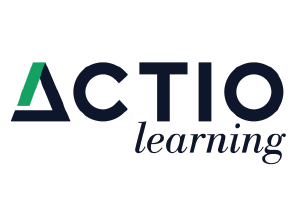When I worked as a senior training specialist at the U.S. Patent and Trademark Office, part of my job was to create custom courses for the business units. It was a great experience, and I picked up many internal consulting methods. The most important skill I developed was how to build empathy for the customer’s challenges. Listening closely and dialoguing with the customer was the key to building an effective course that best solved clients’ problems.
Here are three methods that have become some of my most trusted internal consulting tools.
1. Jobs to Be Done Theory
Clayton Christensen developed the Jobs to be Done Theory (JTBDT) after studying buyers’ motivations. You may have heard the famous phrase that people buy drills not because they want a drill; they want half-inch holes. Managers don’t want courses just to send their people to a class. They want the knowledge and behavior change that will result from the course.
According to JTBDT, you first determine the jobs that the learners need to accomplish. For example, the learners need to create a spreadsheet to analyze data from an ongoing process. Analyzing the data is the job to be done. Currently, the learners have only basic knowledge about spreadsheets and data analysis. They spend hours building the spreadsheet, collecting the data, and analyzing it. That is their pain.
Your job as the internal consultant is to build a course that relieves the learners’ pain by giving them the spreadsheet skills they need to realize gains from their advanced spreadsheet and analysis skills. Start by discovering your prospective learners’ jobs to be done, the pains associated with the jobs, and how your course can alleviate the pains by giving the learners gains.
2. Look and Understand With Design Thinking
In gaining my design thinking certification from the LUMA Institute, I learned many techniques to help me develop a fuller understanding of clients’ needs. Techniques such as journey mapping a client’s process, observing a day in the life of the learner, and having him or her visually plot their essential concerns have proven invaluable.
Another helpful design thinking technique is “think-aloud testing.” I would have the client go through a job task while telling me their thoughts and decisions as they proceed through the steps. Think-aloud testing helps me understand the pains of their current job task. From my observations, I can think of ways to alleviate the pains and create gains for learners.
3. Pilot Courses
Pilot courses are a great way to verify the information you have gathered from the first two methods. Your first drafts of the pilot courses need not be elaborate; I usually start with the learning objectives and outline topics I show the customer. Once the learning objectives and outline are approved, I fill in the rest of the training information. I do a quick course run-through with my colleagues to obtain their insights.
For the first course with the learners, I invite the managers to observe. I also recruit a colleague to take notes on my delivery and how the learners react to the course. After the course, I work with the colleague to analyze the evaluations, the colleague’s notes, and comments from the managers to refine the course. I will do a couple more cycles of the course to enhance it. After finalizing the course, I will revisit it every six months to confirm that I am meeting the customer’s needs.
As a learning leader, you have a great responsibility in helping the organization meet its strategic goals by building the workforce’s skills. Building your internal consulting skills will help you create and deliver courses and programs that best meet both individual and stakeholder needs.






